Giant Panda, reputed as “living fossil”, is the national treasure in China! You may know the adorable creature on earth is in black and white. But how many other facts do you know?
It is very necessary to do a little research no matter before you go to see the pandas or throw yourselves into a panda volunteer program. Check the following 15 interesting facts about giant pandas, helping you know further about their diet, habitat, behaviors, life span, weight, and living status...Enjoy!
The Giant Panda, literally “Big Bear Cat”, also known as panda bear or simply panda, is a bear native to South Central China. It belongs to the Ursidae - the Family of Bears. A panda is a primitive bear.
| Kingdom | Animalia |
|---|---|
| Phylum | Chordate |
| Class | Mammalia |
| Order | Carnivore |
| Suborder | Caniformia |
| Family | Ursidae |
| Genus | Ailuropoda |
| Species | Ailuropoda melanoleuca |
There are only “black” and “white” colors all over a panda’s body. The fur around their eyes, ears and feet is black. The rest of its fur is white in color.
Many Chinese philosophers think that the universe is made from two opposing forces - the Yin and Yang. Hence, the giant panda is the perfect example of this philosophy with its contrasting black and white fur. Furthermore, the gentle nature of this black and white creature brings peace and harmony when they are balanced!

The World Wild Fund for Nature, short for WWF, is the world’s largest conservation organization, working in over 100 countries. It is is an international non-governmental organization founded in 1961, aim to work in the field of the wilderness preservation and reduce human impact on the environment.
The logo is the “giant panda” which was originated from a cute panda named Chi Chi that had been transferred from Beijing Zoo to London Zoo in 1958. WWF chose the the rare and recognizable physical features and statues of giant panda as an endangered species which stood for a strong symbol that would overcome all language barriers. WWF also needed an animal that would have an impact in black and white printing and while Panda is the perfect example.

Giant panda belongs to the order Carnivores, but over 99% of its diet is dependent on bamboo. Every day, an adult panda need to eat about 40 pounds (18 kilograms) bamboo to get through the day. When you visit one of their habitats in Sichuan, like Chengdu Panda Base or Dujiangyan Panda Base, you’ll see most of the pandas eating fresh bamboo or bamboo shoots.
Pandas in the wild will sometimes eat other grasses, wild tubers, or even meat in the form of birds, rodents, or carrion. Pandas in captivity may also eat honey, eggs, carrots, yams, fish, shrub leaves, apples, oranges or bananas, etc. For panda volunteers who do volunteering work at the pointed panda bases, they can experience the special time to learn how to make “panda cake” and of course, feed the specially-designed food in person.
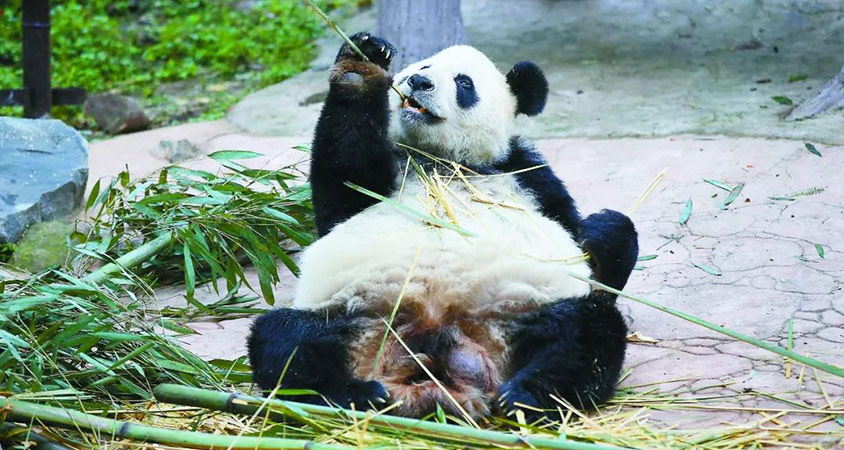
As you know, the main part of a panda’s daily life is bamboo, bamboo and bamboo. It means a panda bear should spend over 12 hours a day foraging and eating. The rest of its time is spent mostly sleeping and resting. They will sleep for 2 to 4 hours after eating. And then eat and sleep...
When you plan a visit to see pandas, it is highly recommended to visit the panda bases or zoos in the morning. Usually, they will start to eat around 08:00 when they are very active and panda lovers can enjoy a lot of fun!
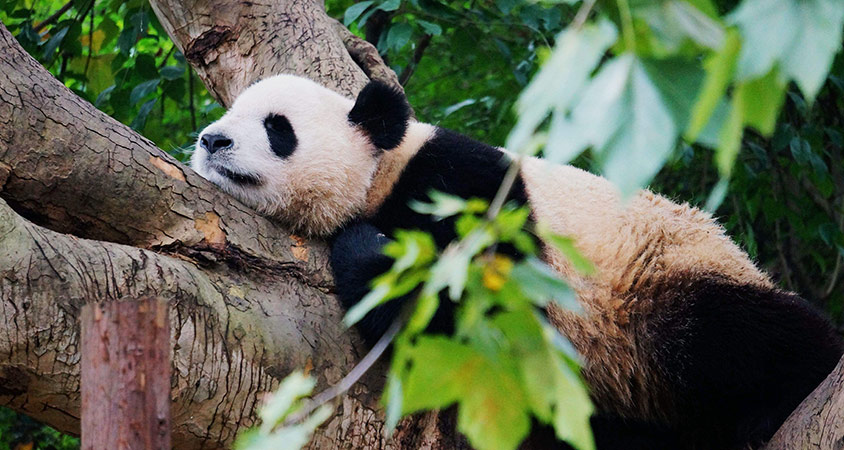
The life of a panda has four stages: “newborn”, “cubhood”, “independence” and “maturity”.
The giant pandas are not in black and white color at birth. In fact, they are pink when they are new born! And within a month, they will develop their fur, turning black and white from pink very slowly.
Keep in mind for traveling: the newborn season is in the late summer and early autumn, usually during August ~ September. To see the newborn pink pandas, you are suggested to visit Chengdu Research Base of Giant Panda Breeding and China Conservation and Research Center for the Giant Panda Bifengxia Base (Ya’an). At the nursery, some newborn pandas are taken good care by the keepers and sometimes you can view the nursing scene.
>> 1 Day Chengdu Relaxing Panda Tour
>> 2 Days Inspiring Ya'an Bifengxia Panda Volunteer Experience
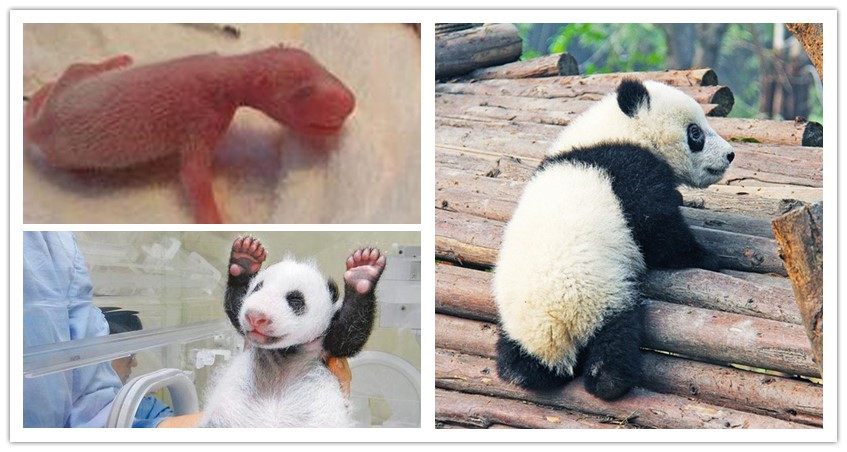
The size of a newborn panda cub is like a stick of butter. It weights around 80g ~200g. The adult panda in captivity is around 80kg ~130kg and the adult panda in wild weights around 60kg ~ 100kg. The weight difference is huge - a panda mother is 900 times bigger than her newborn cub. In comparison, an 8-pound human body would have a mother that weighed 7,200 pounds.
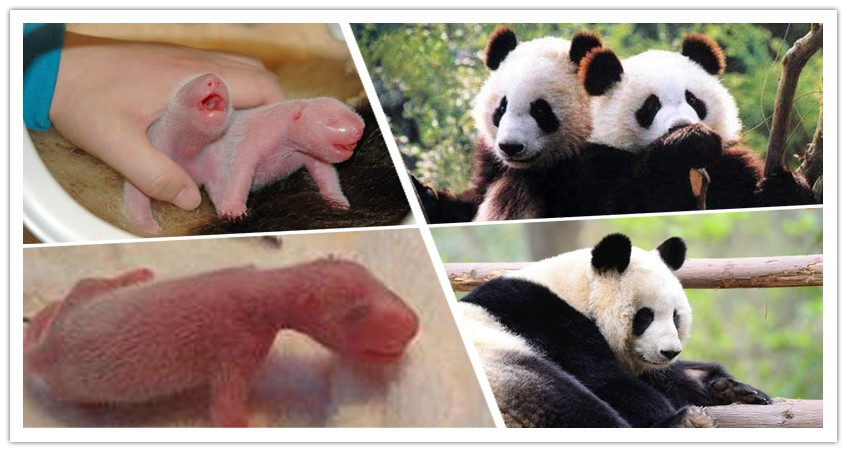
The newborn baby panda is helpless and his/her mother devotes every waking moment to her baby. The young cubs are unable to crawl until they are three months old. They do not even open their eyes until about 45 days old. The cubs needs to be in a protected area like a den until it is 120 days old. At 14 month old, they try to eat solid foods, specially bamboo. They wean at around 18-24 months old and will leave to live a solitary life soon after. After that, their mom will prepare to breed the next baby.
Reputed as “Living Fossil” and “National Treasure”, the giant panda itself appeared suddenly during the late Pliocene or early Pleistocene, perhaps more than two to three million years ago. Panda fossils have been found in Burma, Vietnam, and particularly in Western China.
Giant Panda has a long life span. On average a panda living in the wild can live around 20 years and giant panda in captivity lives on average for between 25 - 35 years. A female panda called “Jia Jia” lived in Hong Kong Ocean Park was the oldest panda bear ever in captivity, born in 1978 and died at an age of 38 (more than 100 years old in human terms) on October 16, 2016.
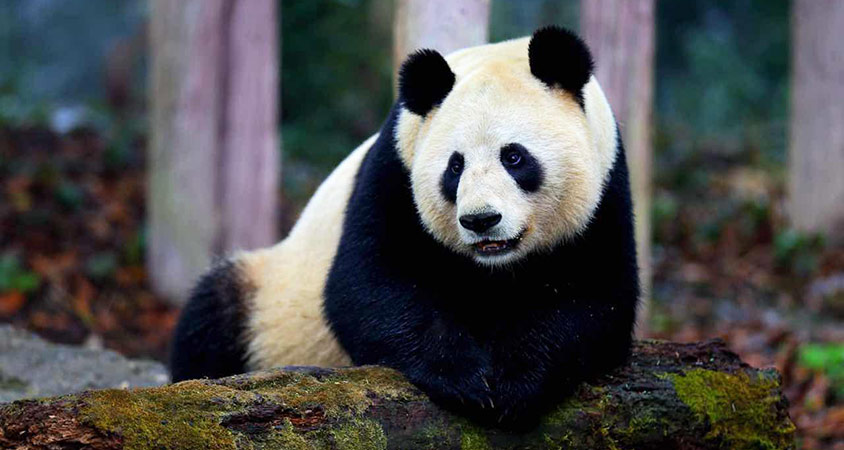
The International Union for Conservation of Nature (IUCN) announced the positive change to the giant panda’s official status in the Red List of Threatened Species, pointing to the 17% rise in the population, when a nationwide census found 1,864 giant pandas in the wild in China. In September of 2017, IUCN changed the status of the giant panda from “Endangered” to “Vulnerable”, showing the great success of many of the efforts done to preserve this sweet creature.
In November 2018, an exact date announced by the authority: there are altogether 2412 giant panda all over the world, among them there are 548 captive giant pandas and giant pandas in wild over 1864. Compared with the numbers in 1980s, the number in 2018 has been increased 1.67 times.
Good news in 2018 also came from the panda bases and zoos in China. China Conservation and Research Center for the Giant Panda has successfully bred 31 pandas, and Chengdu Research Base of Giant Panda Breeding has bred 11 pandas, while Beijing Zoo has bred 3 cubs.
Kind in mind for traveling: for panda loves who want to do a meaningful volunteer job to take good care of giant pandas, you can choose the one full day program at Dujiangyan Panda Base, Bifengxia Panda Base or Wolong Panda Base. Volunteer fees are very reasonable and volunteers can enjoy brilliant moment with pandas.
>> 1 Day Dujiangyan Panda Volunteer Tour
>> 2 Days Wolong Panda Volunteer Tour at Shenshuping Base
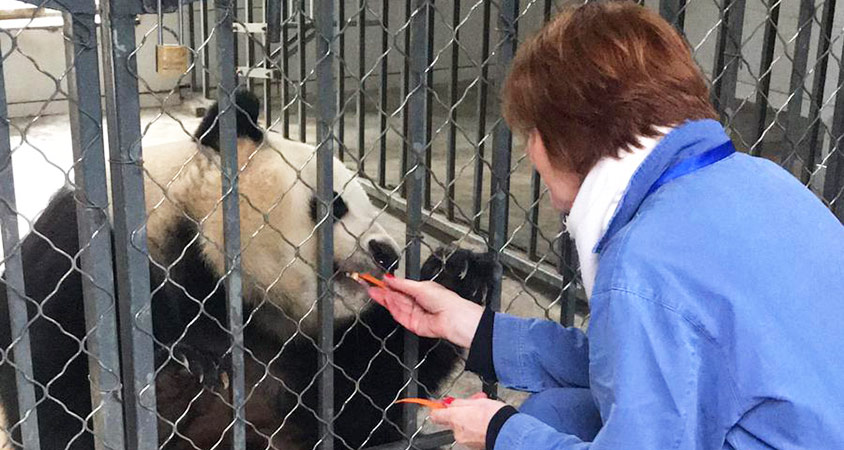
You may doubt the saying “pandas can climb trees and they are good climbers”, right? Giant pandas look like round, fatty and lazy from their appearance. Can they really climb trees? Yes, a certain answer is here - giant pandas are excellent tree climbers.
When you visit the pandas bases or zoos, you can see pandas standing highly on a big tree. Pandas in wild will climb trees to a high place to evade enemies and many pandas living in panda bases or zoos ascend a tree for better view and they choose to sleep on the trunk. They may climb as high as 13,000 feet on higher slopes in the summer season. Even more surprising, pandas are very confident and comfortable swimmers. If a panda feels threatened near water, it can use its swimming skills to escape danger.
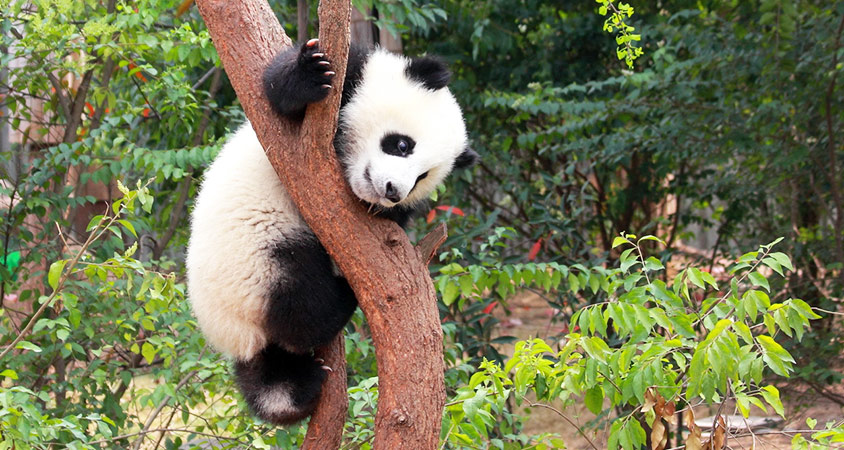
Giant Panda has five fingers and one thumb-like nub. Pandas descend from carnivorous mammal ancestors, as reflected in the many traits they share with bears, dogs and other relatives. What looks like its thumb is actually a wrist bone, the sesamoid, that evolved until it was so big that it stuck out to one side of its forepaw. The muscles that control the bone have become rearranged so that now it can move much like our own opposable thumb. The thumb-like nub is not really a finger, but it plays an important role to grasp the bamboo.
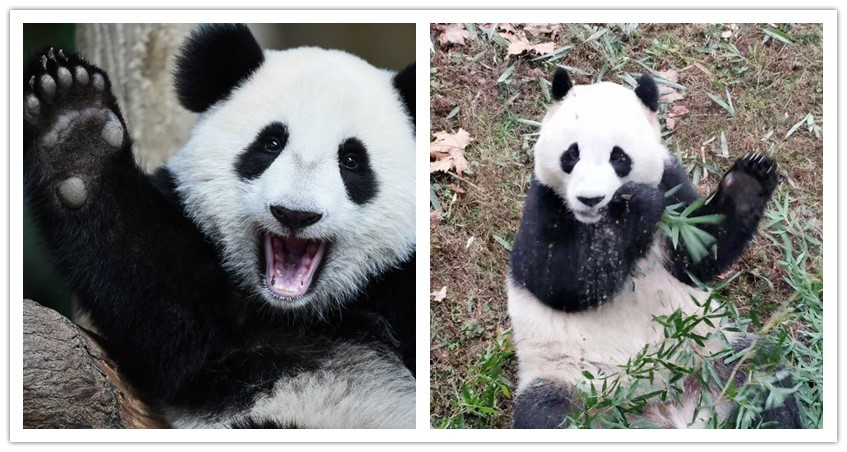
Giant pandas are by nature solitary animals and most of the time they avoid direct contact with others of their own kind. Every year, male and female pandas only come together briefly to mate for 2 to 3 days in spring during March ~ May. Recent research, however, suggests that giant pandas occasionally meet outside of breeding season, and communicate with each other through scent marks and calls.
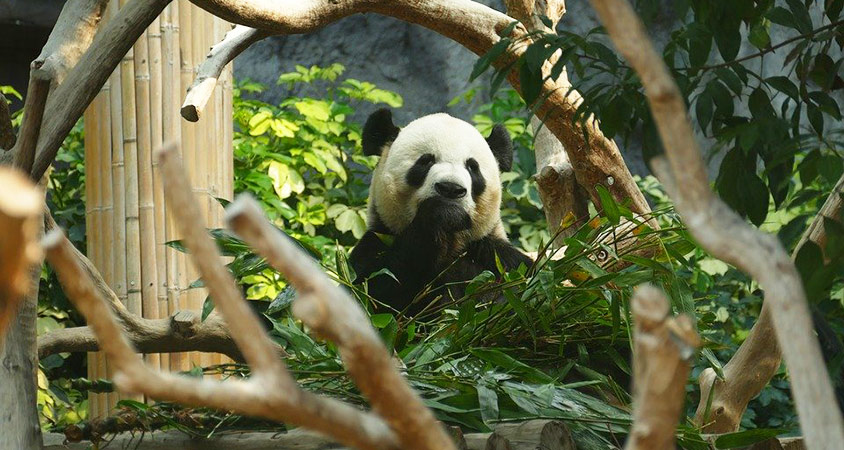
The red panda, known as “lesser panda” or called “red bear-cat”, looks quite different to the giant pandas, they more resemble the appearance of a racoon or weasel type animal. Unlike giant panda in black and white, red panda has reddish-brown fur, a long, shaggy tail, and a waddling gait due to its shorter front legs. Their diet are the same and red panda is also bamboo eater and its diet is mainly bamboo.
For travelers who pay a visit to a zoo or a panda base, you can have a close contact with giant pandas as well as the red pandas in one go! The recommended place to visit is Chengdu Panda Base with more than 120 giant pandas and 76 red pandas that you can see them as many as possible. If you want to attend a red panda volunteer program in China, Hetaoping Panda Base (Wolong, Sichuan) is the only place to experience the volunteering work with red pandas for one full day!
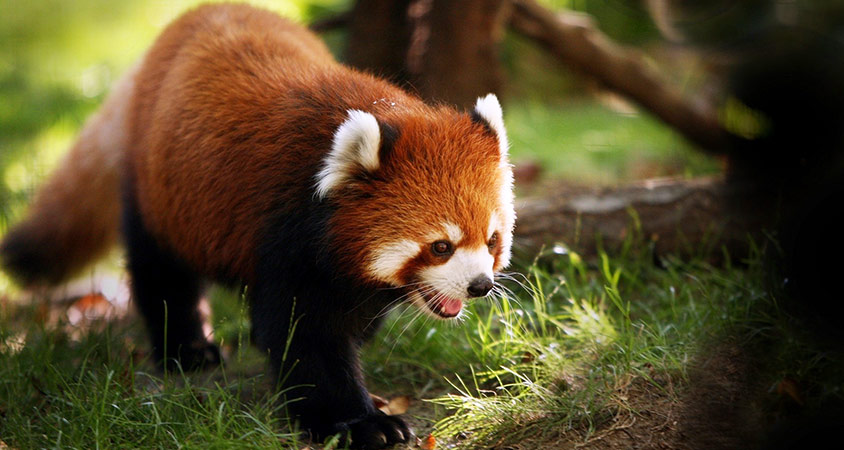
With local based China Discovery, travelers can learn more facts about pandas, see pandas as many as possible and even take part in the interesting panda volunteer program with the best value and most reasonable price! Why not join us now?!
Top 3 tours chosen by most customers to explore in the best way. Check the detailed itinerary, or tailor your own trip now with us.

Beijing / Xian / Chengdu / Shanghai
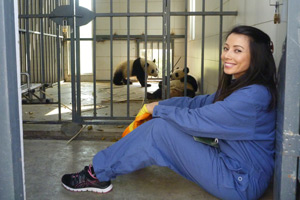
Chengdu / Dujiangyan / Chengdu
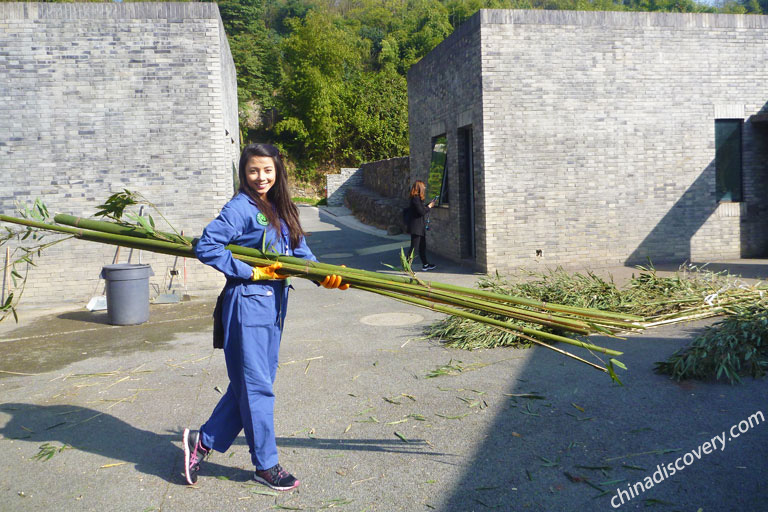
Chengdu / Leshan / Emei / Chengdu / Dujiangyan / Chengdu
Start planning your tailor-made holiday to China by contacting one of our specialists. Once inquired, you’ll get a response within 0.5~23.5 hours.
Customize a Trip